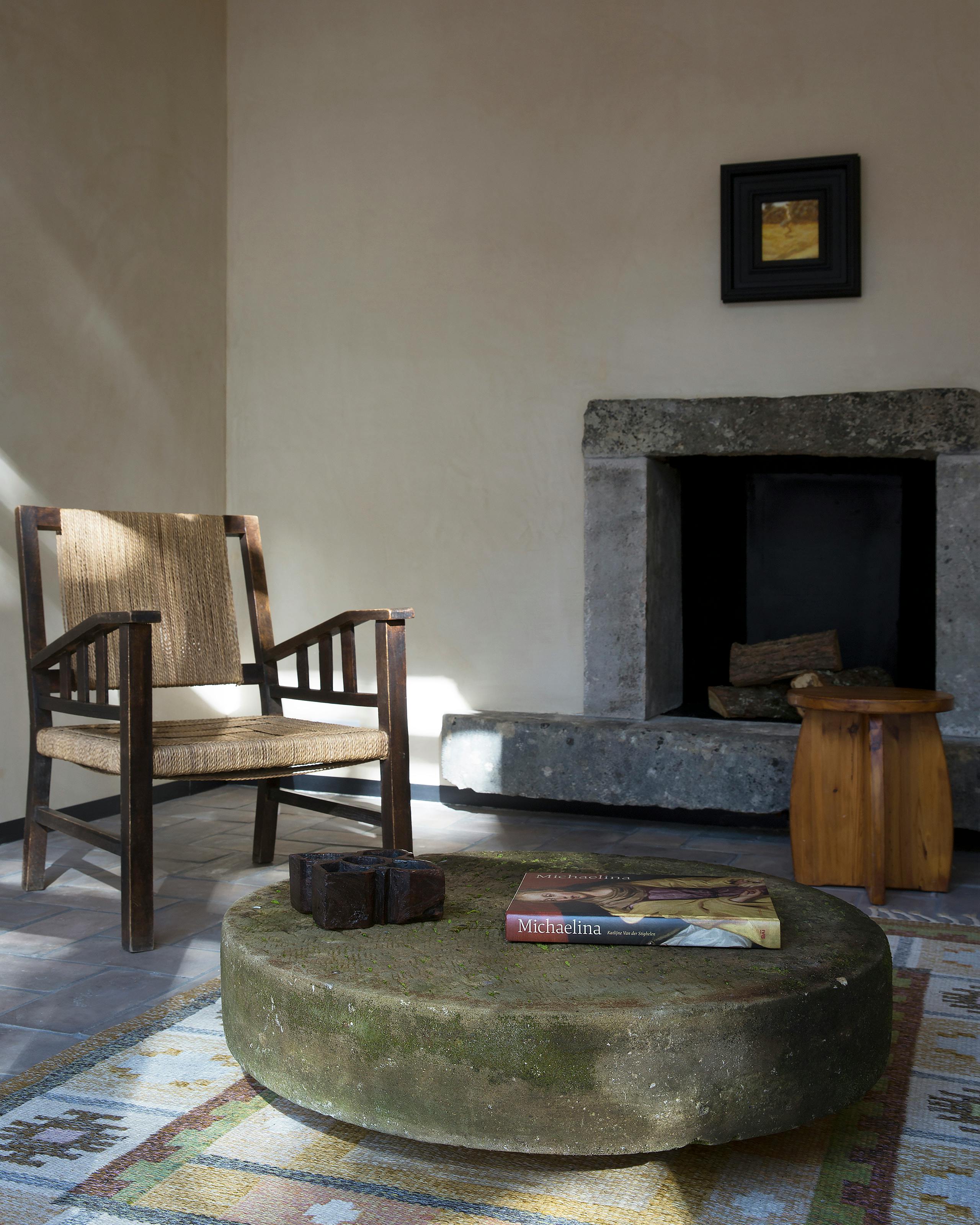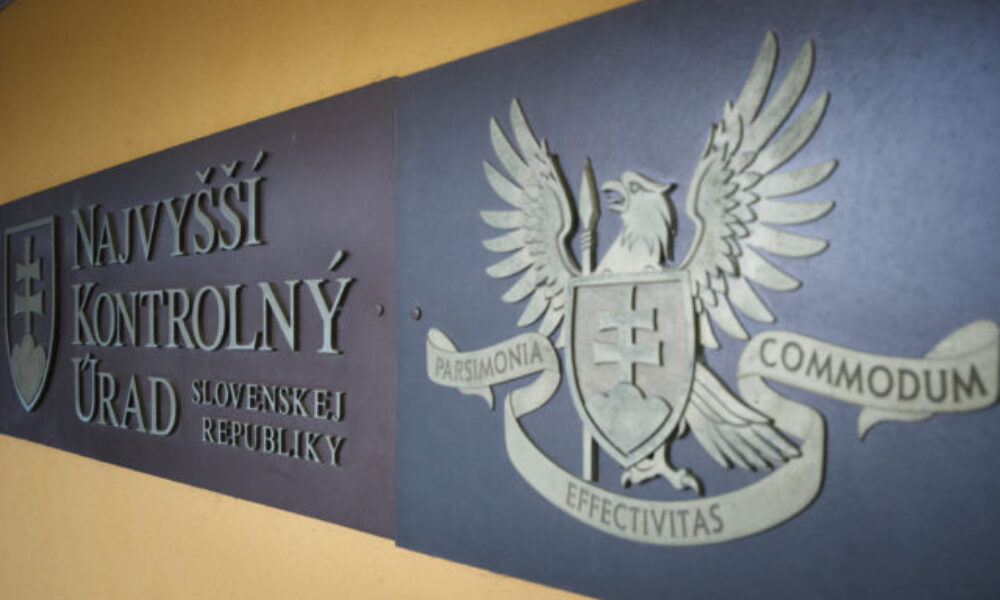
Known for his attention to detail, Paul du Pré de Saint Maur is a student of the world. The French architect and interior designer, 30, studied in the United Kingdom and Italy before returning to Paris, where he trained under world-renowned interior architect Pierre Yovanovitch; that apprenticeship eventually led him to New York, where he took on his first major project in the Hamptons at just 21. Since then, du Pré de Saint Maur has taken on a creative partner, architect Ahyun Claire Son, and opened his own eponymous studio. Today, the global reach of his designs spans from Burgundy, France, to Busan, South Korea.
There is, however, one historical period that has influenced du Pré de Saint Maur’s work most. He often pays homage to the Italian Renaissance’s architecture, delivering a pared-down reinterpretation that brings a dose of 15th-century charm to modern spaces. He’s even launched a furniture collection, Cinquecento, inspired by the era. Here, du Pré de Saint Maur opens up to L’OFFICIEL about his creative process, his love of craftsmanship, and the project of his dreams.
L’OFFICIEL: Why did you leave France to study in Glasgow and Rome?
PAUL DU PRÉ DE SAINT MAUR: I didn’t really like the French teaching style—the professors impart their philosophy or dogma, and the students follow suit. So I went to Glasgow, where I graduated from the University of Strathclyde. I then continued at the Università degli Studi Roma Tre because, as my studies progressed, I became increasingly interested in the origins of contemporary architecture. When I arrived there, I was still in a proto-minimalist style. But I wanted to learn something else to enrich my knowledge, and I was required to do an internship between my bachelor’s and master’s degrees. So I returned to France.
L’O: And who did you work for?
PDSM: Gilles Perraudin. I was interested in his work on stone and massive architecture, but the project we were supposed to work on was cancelled, which, I think, was a blessing in disguise. So I contacted Pierre Yovanovitch. When I came to him, I was still very much an architect in my way of thinking. The experience allowed me to open up, to free my ideas, to become more comfortable with my desire to create things inspired by history, with more materiality and a little less globalist value. I worked alongside him for two and a half years, first in Paris and then in New York. It was fascinating. Early on, when I was 21, I was very fortunate to be in charge of a very large project—2,700 square meters in the Hamptons—which allowed me to get to the heart of the matter. Then, two years ago, I launched my interior design firm, and am now partnered with Ahyun Claire Son, who has extensive experience as an architect in the retail sector through projects with Louis Vuitton, Dior, and Dolce & Gabbana.
L’O: What project got you started?
PDSM: The renovation of a farmhouse in Burgundy, the LB Residence—named with the owner’s initials—which respected the original features. Then another project in Dijon, and then Cecilia Mergui’s first Bienaimé perfume boutique. She’s a great collector of Art Deco objects, drawings, and furniture who stumbled upon a powder compact by Robert Bienaimé—a great perfumer of the 1930s and 1940s—while hunting for bargains. She decided to purchase the brand to give it new life. For her, we created a window display inspired by those years, remaining faithful to certain codes while adding a touch of modernity. It was with this boutique that we began to express ourselves as true architects, because we practically had carte blanche.
We don’t like to say we already have a signature; it would confine us. But we’d like to be recognizable, and people tell us that our work is.
L’O: And the château in Burgundy…
PDSM: It was a huge project, obtained thanks to friends of my family. There were some strong elements, but many things needed to be redone, from the ceilings to the woodwork. We took all the elements, categorized them, and based on that, we reinvented a space that was consistent with what was originally there, but also with what we love—which is Renaissance architecture. We opted for shades of red for the living room, with a play of blacks that you would never see in 19th-century architecture but which, ultimately, worked very well. We were lucky to work with very open-minded clients.
L’O: Do you also have projects abroad?
PDSM: A penthouse in the Tribeca neighborhood of New York, for a hip-hop producer. The view is sublime. We used a lot of stone. In our projects, we try to work with natural materials, often the same material but with different finishes to create real contrasts. Finally, my partner, who is Korean-American, and I are discussing a project in Busan, two buildings for hospitality.
L’O: What do you think is your signature?
PDSM: We don’t like to say we already have a signature; it would confine us. But we’d like to be recognizable, and people tell us that our work is. At the same time, we’re working on a sort of apartment-hotel on Rue Saint-Marc in the 2nd arrondissement of Paris, which will be our showroom. We’re going to redesign it in our image, to showcase our style and expertise.
L’O: Is there a decade or period that you’re drawn to most?
PDSM: The architecture of the Italian Renaissance. (So, reader, if you can hear us, commission us for a palazzo in Venice.) I believe that was the moment in architecture when they played with the classical, but reinvented it starting from a completely imagined architecture. Because at the time, archaeology didn’t really exist. So, they imagined what the buildings of antiquity might have been like, with more or less convincing results, and that gave rise to rather extraordinary imagination. That’s what I find interesting about that era: they were so far from the architecture that inspires them, they couldn’t recreate it. Similar to us, we’re far enough from Renaissance architecture that we can’t recreate it today. We can only draw inspiration from it and translate it. Unlike the 1930s, for example, which were recent enough that they’re more susceptible to reinterpretation. In addition to the Renaissance, we love classic Parisian maximalism with stone, large volumes, and wood paneling. Our architecture is intended to be monumental and sacred.
L’O: Do you have any historical inspirations?
PPSM: During the Renaissance, there were many, and more recently, there have been architects who stand out, such as Edwin Lutyens [a British architect and urban planner known for his architectural style].
L’O: What’s your creative process like? How does a project begin?
PPSM: It always begins with a dialogue, through which we try to understand our client and their lifestyle. For example, for a project on Rue de Valois, the client told us about their love for the Palais Royal and its wood paneling, so we worked on some of the carpentry motifs found there. Initially, it can be a bit difficult for the client to make themselves understood. But they ask a lot of questions, and that allows us to better understand their expectations. In the beginning, it’s really a matter of dialogue and words, more than images.
L’O: You launched your first furniture collection, called Cinquecento, in homage to the Italian Renaissance.
PPSM: It’s an eight-piece collection that includes the Carlo sofa, the Andrea armchair, the Filippo ottoman—which preserves the essence of Middle Eastern seating—as well as the Camillo and Francesco bedside tables, inspired by temples and churches. The Lorenzo coffee table, with its circle within a square, is typical of the Renaissance, and the Michelangelo bed evokes both the solidity of a house and the delicacy of a work of art. Through their design and materiality, they are all rooted in a historical heritage while remaining truly contemporary. Our second collection, which is currently in preparation, focuses on lighting, with plays on curves.













